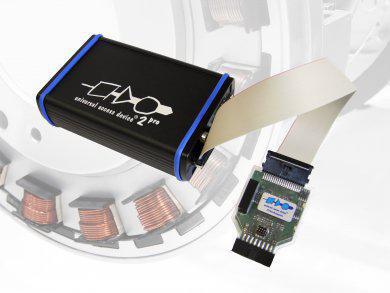PLS' Universal Access Device 2pro now also enables strong electrically isolated connections to the target
Lauta (Germany) – September 13, 2012 – PLS Programmierbare Logik & Systeme presents its Universal Access Device 2pro (UAD2pro) at electronica 2012 in Hall A6, Booth A12. The UAD2pro is an especially high-performance, versatile target access device for on-chip debugging of a wide range of 16‑bit and 32‑bit microcontrollers.
Connection of the debug hardware to the PC is achieved via a USB 2.0 interface. For all Windows versions, starting from Windows XP including the 64-bit version, easy-to-install device drivers are available by means of plug & play.
Connection to the target takes place by means of architecture-specific adapters - available for JTAG, cJTAG, DAP, SWD, OnCE and other manufacturer-specific debug interfaces - via a universal interface. When changing to another microcontroller architecture the user only needs a different adapter and a corresponding license. Updates and downloading of the firmware takes place transparently for the user.
Apart from the universal target interface, the UAD2pro offers a D-sub connector that can optionally be used as serial or CAN interface. Thus, not only various bootstrap loader mechanisms of the respective microcontroller are supported; the UAD2pro can also be used as CAN recorder hardware in parallel to debugging.
For debugging microcontroller boards with high-voltage components, as is common for instance with motor or inverter controls, target adapters with an electrical isolation of up to 1,000 V can optionally also be used with the UAD2pro. At the same time, the full transmission bandwidth of 50 MHz serial clock is maintained.
The UAD2pro from PLS, which is offered together with a software license of the Universal Debug Engine (UDE), is available for TriCore, Power Architecture (e200), XC2000/XE166, Cortex, ARM and other microcontroller architectures. The UDE also supports multi-core debugging and special emulation devices. Furthermore, a seamless integration in an Eclipse-based development environment is possible by means of an own debugger perspective.

